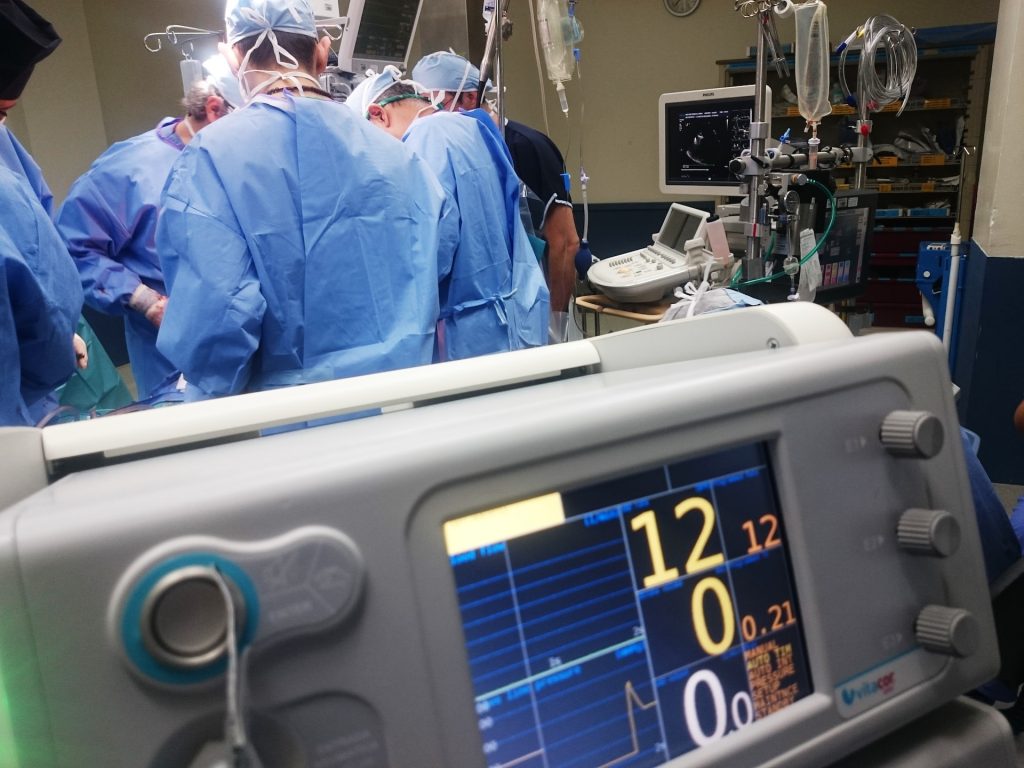Spinal Cord Stimulation Slows Loss of Function in Spinal Muscle Atrophy

Electrical stimulation of the sensory spinal nerves targets the root cause of progressive loss of neural function in spinal muscle atrophy (SMA), an inherited neuromuscular disease. The intervention can gradually reawaken functionally silent motor neurons in the spinal cord and improve leg muscle strength and walking in adults with SMA. The findings were reported by University of Pittsburgh School of Medicine researchers in Nature Medicine.
Early results from a pilot clinical trial in three human volunteers with SMA show that one month of regular neurostimulation sessions improved motoneuron function, reduced fatigue and improved strength and walking in all participants, regardless of the severity of their symptoms.
“To counteract neurodegeneration, we need two things – stop neuron death and restore function of surviving neurons,” said co-corresponding author Marco Capogrosso, assistant professor of neurological surgery at Pitt School of Medicine. “In this study we proposed an approach to treat the root cause of neural dysfunction, complementing existing neuroprotective treatments with a new approach that reverses nerve cell dysfunction.”
Doug McCullough, one of three participants in the study, says his SMA had progressed to the point that even walking on smooth surfaces was difficult when he started the trial in 2023. The research team kept him blind to most of the quantitative data but showed him video to reveal how effective the treatment was proving to be. The team captured footage of McCullough at various points during the trial to monitor his progress.
“Because my hip flexors are so weak, I basically have this waddling gait where my hips sway back and forth and I swing my legs out to the side because I can’t pick them straight up,” he says. “You could clearly see from the video that my walk was improved and that I was walking faster. I had a little more natural gait. It still wasn’t completely normal, but it was better than what it was before the study.”
SMA is a genetic neurodegenerative disease that manifests in progressive death and functional decline of motor neurons – nerve cells that control movement by transmitting signals from the brain and the spinal cord to the muscles. Over time, the loss of motor neurons causes gradual muscle weakness and leads to a variety of motor deficits, including for the participants in this trial, difficulty in walking, climbing stairs and standing up from chairs.
While there is no cure for SMA, several promising neuroprotective treatments have become available in the last decade. These include gene replacement therapies and medications, both of which stimulate the production of motoneuron-supporting proteins that prevent neuronal death and that slow down, though not reverse, disease progression.
Studies show that movement deficits in SMA emerge before widespread motoneuron death, suggesting that underlying dysfunction in spinal nerve circuitry may contribute to disease onset and symptom development. Earlier research on animal models of SMA by study coauthor George Mentis of Columbia University, showed that surviving motor neurons receive fewer stimulation inputs from sensory nerves. Compensating for this deficit in neural feedback could, therefore, improve communication between the nervous system and the muscles, aid muscle movement and combat muscle wasting.
Pitt researchers hypothesised that a targeted epidural electrical stimulation therapy could be used to rescue lost nerve cell function by amplifying sensory inputs to the motor neurons and engaging the degenerated neural circuits. These cellular changes could, in turn, translate into functional improvements in movement capacity.
The Pitt study was conducted as part of a pilot clinical trial that enrolled three adults with milder forms of SMA (Type 3 or 4 SMA). During a study period of 29 days, participants were implanted with two spinal cord stimulation (SCS) electrodes that were placed in the lower-back region on each side of the spinal cord, directing the stimulation exclusively to sensory nerve roots. Testing sessions lasted four hours each and were conducted five times a week for a total of 19 sessions, until the stimulation device was explanted.
After confirming that the stimulation worked as intended and engaged spinal motor neurons, researchers performed a battery of tests to measure muscle strength and fatigue, changes in gait, range of motion and walking distance, as well as motoneuron function.
“Because SMA is a progressive disease, patients do not expect to get better as time goes on. But that is not what we saw in our study. Over the four weeks of treatment, our study participants improved in several clinical outcomes with improvements in activities of daily living. For instance, toward the end of the study, one patient reported being able to walk from their home to the lab without becoming tired,” said co-corresponding author Elvira Pirondini, assistant professor of physical medicine and rehabilitation at Pitt School of Medicine.
All participants increased their 6-Minute Walk Test score (a measure of muscle endurance and fatigue) by at least 20m, compared to a mean improvement of 1.4m over three months of comparable exercise regimen unaided by SCS and a median increase of 20m after 15 months of SMA-specific neuroprotective pharmacologic therapy.
These functional gains were mirrored by improved neural function, including a boost in motoneurons’ capacity to generate electrical impulses and transmit them to the muscles.
Source: University of Pittsburgh





